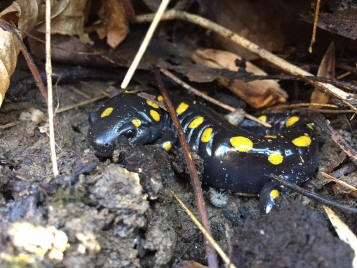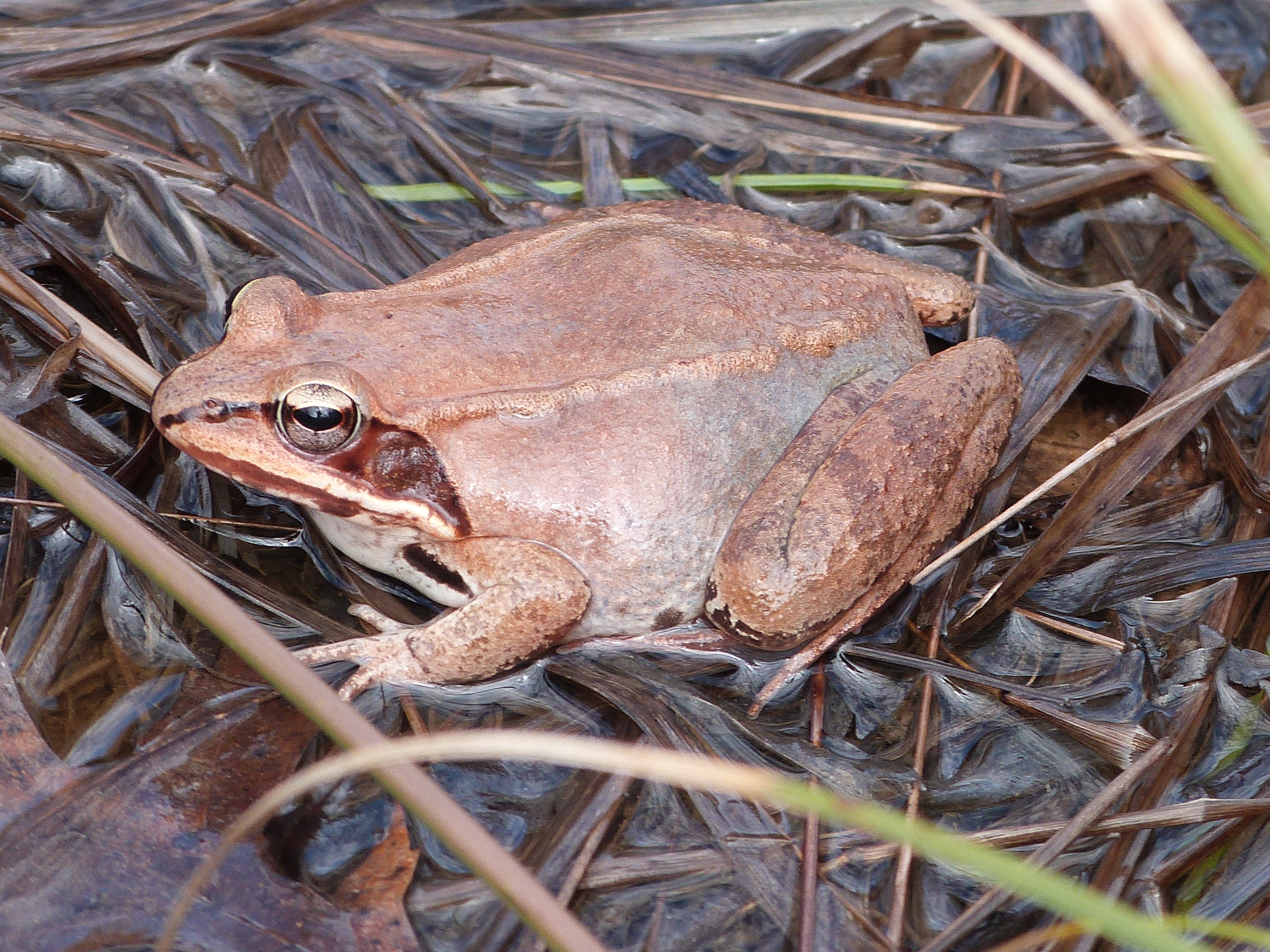Spring arrives on March 20th or 21st each year. By then, signs of the new season have been appearing for a couple of weeks in the mid-Atlantic area. Flowers are popping from the ground, buds are swelling on trees and temperatures are slowly warming. Also, it is the time for a unique and temporary wildlife habitat to form known by a variety of names: vernal ponds/pools,
ephemeral and seasonal pools. Due to weather conditions, their size changes annually; however, they have a life cycle and unique geological and soil conditions.
Specifically, their life cycle spans three seasons: winter, spring and summer. Winter is the wet season, providing moisture for these ponds, which do not have other water sources. Snow melts and rain collects in special depressions in the forest. Then, bacteria and protozoa start to consume dead leaves, plants and animal materials at the bottom of the pond. Next,
algae, simple aquatic cells that perform photosynthesis, appear. Thirdly, invertebrates emerge from cysts, eggs and spores after waiting for the return of water.
 Larger creatures now visit. In Pennsylvania, the Jefferson salamander arrives first. From mid-January to early March on rainy nights, they mate and the females lay eggs in long beadlike strings which are attached to submerged branches or vegetation. Spotted salamanders repeat this
process in late February to early April. Also, during these 3 to 4 months, various types of frogs come to mate and deposit eggs, including the wood frog. The females lay masses that are large, shapeless, soft, and contain hundreds of eggs. Spring peepers use these ponds, too. Having an adult size of only an inch to an inch and a quarter, they are Pennsylvania's smallest
frog. However, the males have the loudest voice in proportion to size of the native frogs. Their call marks territory and attracts females.
Larger creatures now visit. In Pennsylvania, the Jefferson salamander arrives first. From mid-January to early March on rainy nights, they mate and the females lay eggs in long beadlike strings which are attached to submerged branches or vegetation. Spotted salamanders repeat this
process in late February to early April. Also, during these 3 to 4 months, various types of frogs come to mate and deposit eggs, including the wood frog. The females lay masses that are large, shapeless, soft, and contain hundreds of eggs. Spring peepers use these ponds, too. Having an adult size of only an inch to an inch and a quarter, they are Pennsylvania's smallest
frog. However, the males have the loudest voice in proportion to size of the native frogs. Their call marks territory and attracts females.
This ecosystem supports more than animal species. In the spring phase, as the pools begin to recede, the exposed mud allows plant seeds to germinate. In Pennsylvania, rice cutgrass, wool grass, and buttonbush grow. Notably, endangered or rare plants live in this habitat, including lance-leaved loosestrife, northeastern bulrush, Oakes, pondweed, small beggar-ticks, and
spotted pondweed. Northern bulrush is listed by the Federal government as endangered, and it grows almost solely in seasonal pools in Pennsylvania.??
 In the late spring and summer, as the ponds evaporate the newly mature reptiles and amphibians journey into the surrounding forest. Invertebrates, including damselflies, dragonflies and mosquitoes mate and lay egg cases before the ponds disappear. Depending on local conditions,
the ponds can partially recede or completely dry up by summer or late summer. They can desiccate so much that the submerged vegetation perishes and the soil cracks. However, indicators of the presence of former inhabitants remain:?? blackened, compressed leaf litter, gray soil, algae and moss growth or watermarks on nearby trees, and signs of life that use water, such as
caddisfly egg cases, desiccated egg masses, and snail shells. The most obvious evidence may be the presence of moisture tolerant or moisture loving vegetation, such as high bush blueberry, growing in an area without obvious water.
In the late spring and summer, as the ponds evaporate the newly mature reptiles and amphibians journey into the surrounding forest. Invertebrates, including damselflies, dragonflies and mosquitoes mate and lay egg cases before the ponds disappear. Depending on local conditions,
the ponds can partially recede or completely dry up by summer or late summer. They can desiccate so much that the submerged vegetation perishes and the soil cracks. However, indicators of the presence of former inhabitants remain:?? blackened, compressed leaf litter, gray soil, algae and moss growth or watermarks on nearby trees, and signs of life that use water, such as
caddisfly egg cases, desiccated egg masses, and snail shells. The most obvious evidence may be the presence of moisture tolerant or moisture loving vegetation, such as high bush blueberry, growing in an area without obvious water.
Vernal ponds could not exist without special conditions regarding their formation and composition. Specifically, they develop in isolated depressions, some of which were created by glaciers that covered Pennsylvania approximately 15,000 years ago. Also, these depressions occur when heavy rains cause streams to overflow their banks into the floodplain. As the water
moves quickly, it removes soil and rock, causing a low spot. Finally, in areas with bedrock that is easily eroded, groundwater may leach it away, causing the soil to sink into the empty space, but leaving an indentation on the surface.??
Furthermore, the soil in these depressions usually is impermeable, having high amounts of clay and silt that prevent or slow water seepage into the ground. Eventually, hydric soils develop due to long term water saturation and the development of no-oxygen, anaerobic conditions. These soils contain pockets of red coloration due to excess iron and pockets of light gray
due to a lack of iron. These strata are not usually readily visible, since a top layer of dark organic soil covers them.??
In summary, vernal ponds are quite unique, since they establish a different type of habitat within a forest. Invertebrates, amphibians and reptiles have developed part of their breeding cycle to coincide with their existence. Due to separation from any body of water, no fish are present, providing some safety for eggs and offspring. Frequently, adult amphibians return
from the forest to the same pool every year to reproduce.
These habitats are so important that the Pennsylvania Vernal Pool Registry has been created. It is a citizen science project using volunteers to record their location and fauna. For more information about this program and vernal ponds in general, please visit the website for the Pennsylvania Natural Heritage Program at??http://www.naturalheritage.state.pa.us/VernalPools.aspx.
Remember that protecting the water supply also helps protect these small, distinctive and important ecosystems and their inhabitants now and in the future.
Read other articles on ecological gardening & native plants
Read other articles by Melody Kraus